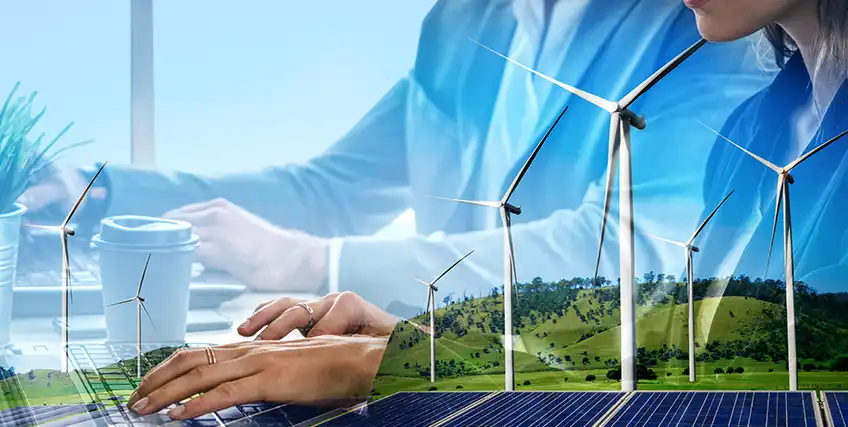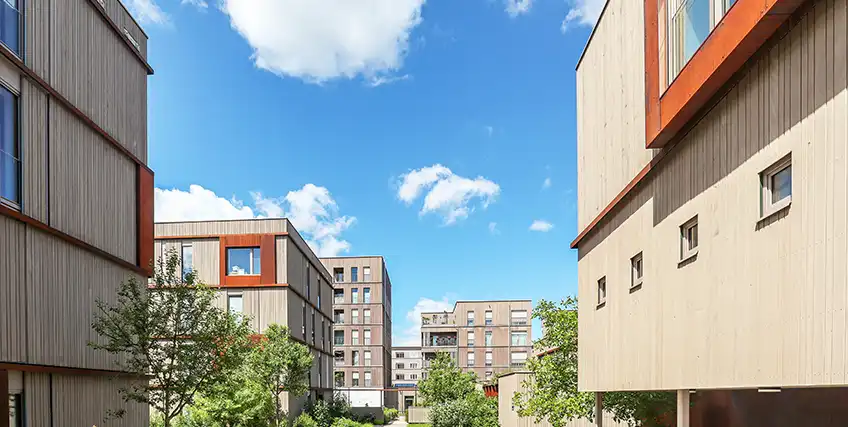Green Loans: Paving the Path to a Sustainable Future
March 21, 2025 | Last Updated on: March 24, 2025

In the face of climate change, resource depletion, and the pressing need for environmental responsibility, industries and governments alike are pivoting toward sustainability. At the intersection of financing and environmentalism, green loans are emerging as a key tool to fund eco-friendly projects that contribute to the long-term health of the planet. These loans, designed to finance projects that promote energy efficiency, renewable energy, and sustainability, are playing an increasingly critical role in supporting the global transition to a greener future.
What Are Green Loans?
Green loans are loans specifically intended for the financing of projects that have a positive environmental impact. The projects funded by green loans typically focus on improving energy efficiency, reducing carbon emissions, promoting the use of renewable energy, and other initiatives that support sustainability. These loans are structured to incentivize investments that foster long-term environmental benefits while also aligning with the financial goals of the borrower.
What distinguishes green energy loans from other types of loans is that they are purpose driven. While traditional loans can be used for any number of business activities, green loans come with a mandate to fund projects that contribute directly to the environmental and sustainable goals set by global communities.
The Rise of Green Loans in the Financial Sector
In recent years, there has been an increasing global demand for green financing products. This demand stems from the growing awareness of climate change, environmental degradation, and the need for businesses, governments, and individuals to transition to sustainable practices. Governments and financial institutions are working together to create a variety of green funds loans, such as green bonds, green mortgages, and green loans.
According to the International Finance Corporation (IFC), green loans offer businesses, governments, and other entities access to capital for projects that align with the United Nations Sustainable Development Goals (SDGs), particularly in relation to climate action (SDG 13) and responsible consumption and production (SDG 12). Green loans are also seen as part of a broader movement toward green finance, which seeks to direct investments toward projects that address environmental issues while also achieving financial returns.
This evolution is being supported by the implementation of stricter environmental regulations, consumer demand for sustainable products, and an increasing awareness of the financial risks posed by environmental damage. With the climate crisis becoming more urgent, green loans are emerging as an effective financial tool that bridges the gap between financial growth and environmental responsibility.
Key Features of Green Loans
- Environmental Focus: The fundamental characteristic of a green loan is that it is used to finance projects that will reduce environmental harm. These projects can range from improving the energy efficiency of buildings to the installation of renewable energy technologies (such as solar panels, wind turbines, and energy-efficient HVAC systems). Green loans can also fund initiatives that reduce waste, conserve water, or promote sustainable farming practices.
- Lower Interest Rates and Better Terms: Green loans are often structured with favorable terms compared to traditional loans. This can include lower interest rates, longer repayment periods, or more flexible repayment schedules. These incentives are designed to encourage businesses and individuals to invest in sustainable projects, even if the initial cost is higher than conventional alternatives.
- Verification and Certification: To be classified as a green loan, the project financed must adhere to certain environmental standards. For example, green loans may require certification from recognized third-party organizations such as the Green Loan Principles (GLP) developed by the International Capital Market Association (ICMA). These principles outline how projects should be evaluated, monitored, and reported in order to ensure that the green funds express loans are used for genuinely green initiatives.
- Impact Measurement: A key component of green loans is measuring the environmental impact of the financed project. Lenders and borrowers alike are increasingly required to track the performance of green projects, including metrics such as energy savings, reductions in greenhouse gas emissions, and the overall environmental benefit of the investment.
- Eligibility for Green Loans: Green loans can be offered to businesses, municipalities, individuals, and even nonprofit organizations. However, not all borrowers are eligible. To access green loans, borrowers typically need to demonstrate the specific environmental benefit of their project. This may include providing evidence of energy savings, carbon footprint reductions, or other measurable sustainability metrics.
- Long-Term Financial Benefits: While green projects may require a larger upfront investment, they often generate long-term financial benefits through reduced operational costs, such as lower energy bills, tax incentives, and improved property values. For example, a building that is retrofitted with energy-efficient features may experience lower energy consumption and, in turn, reduced energy costs over time.
Why Are Green Loans Important?
The role of green loans in the global push toward sustainability cannot be overstated. These loans help address the financial barriers that might prevent businesses and individuals from investing in green technologies. They also align with broader global efforts to combat climate change and promote sustainable development. Here's why green loans are so important:
1. Climate Change Mitigation
One of the biggest global challenges we face today is climate change. Greenhouse gas emissions, deforestation, and unsustainable consumption patterns are contributing to a warming planet and erratic weather patterns. Green loans provide a direct means of funding projects that help reduce greenhouse gas emissions, transition to renewable energy, and promote more sustainable practices across industries.
For example, financing the installation of solar power systems or the retrofitting of buildings for energy efficiency can result in immediate reductions in emissions. Green loans make it easier for individuals, businesses, and governments to adopt these technologies, supporting the goals of the Paris Agreement, which aims to limit global temperature rise to well below 2°C above pre-industrial levels.
2. Economic Growth and Job Creation
Investing in sustainable projects often leads to economic growth and the creation of new job opportunities. Green loans support the renewable energy sector, energy efficiency industries, and green infrastructure projects, creating jobs in construction, engineering, and renewable energy technologies. Additionally, businesses that invest in sustainable technologies often experience long-term cost savings, enabling them to reinvest in their operations and expand their market share.
3. Attracting Responsible Investors
As consumers and investors alike become more concerned about environmental issues, businesses are under increasing pressure to demonstrate their commitment to sustainability. Companies that prioritize green initiatives can attract environmentally conscious investors who are interested in funding businesses with strong environmental, social, and governance (ESG) practices.
By offering green loans, financial institutions can help businesses attract these types of investors, further strengthening their financial position while also contributing to global sustainability efforts. Similarly, governments can use green fund loans to create projects that align with national sustainability goals, thereby attracting international investments focused on green initiatives.
4. Contributing to Sustainable Development Goals (SDGs)
The United Nations has set forth 17 Sustainable Development Goals (SDGs), which are intended to address a wide range of global challenges, including poverty, inequality, clean energy, and climate action. Green loans directly contribute to several of these goals, including:
- SDG 7 (Affordable and Clean Energy): By financing renewable energy projects, green loans help provide clean and affordable energy to underserved populations and businesses.
- SDG 9 (Industry, Innovation, and Infrastructure): Green loans support the development of sustainable infrastructure and foster innovation in green technologies.
- SDG 13 (Climate Action): Green fund loans projects that directly contribute to reducing greenhouse gas emissions and mitigating the effects of climate change.
5. Encouraging Sustainable Business Practices
For businesses, taking out green loans sends a powerful message to customers, investors, and employees that sustainability is a priority. The financing of green projects, whether it be upgrading to energy-efficient equipment, transitioning to renewable energy, or adopting sustainable manufacturing practices, can significantly enhance a company's environmental reputation.
Moreover, adopting green practices may lead to greater efficiency and cost savings. A company that reduces its energy consumption, water usage, and waste production will not only be contributing to a more sustainable world but will also be improving its bottom line.
6. Energy Efficiency and Cost Savings
One of the most common applications of green loans is financing energy-efficient upgrades to buildings and infrastructure. These improvements can result in substantial long-term savings on utility bills, often paying for the cost of the investment over time. For instance, retrofitting a building with better insulation, energy-efficient windows, and LED lighting can reduce heating and cooling costs, while the installation of solar panels can help businesses and homeowners generate their own clean energy.
In addition to the direct financial benefits, these energy-efficient upgrades also enhance the long-term value of properties and buildings, making them more attractive to potential buyers or tenants.
Examples of Green Loan Projects
There are numerous examples of projects that can benefit from green energy loans. Here are a few prominent examples:
- Residential Energy Retrofits: Homeowners can take out green loans to finance the installation of solar panels, energy-efficient heating and cooling systems, smart thermostats, and improved insulation. These upgrades not only lower energy costs but also reduce the home's carbon footprint.
- Sustainable Agriculture: Farmers may use green loans to invest in technologies that reduce water consumption, improve soil health, or adopt organic farming practices. This helps make agricultural operations more sustainable while reducing their environmental impact.
- Electric Vehicle Fleets: Companies or municipalities can take out green loans to finance the purchase of electric vehicles (EVs), which help reduce greenhouse gas emissions associated with traditional gasoline-powered cars. EV charging infrastructure can also be financed with green loans.
- Building Green Infrastructure: Commercial real estate developers and municipalities can use green loans to build energy-efficient buildings, install renewable energy systems, or invest in water conservation infrastructure.
Final Thoughts: Challenges and the Future of Green Loans
Despite the growing popularity of green loans, there are still challenges to overcome. Some businesses and individuals may find it difficult to access these loans due to high upfront costs or lack of familiarity with green financing options. Furthermore, ensuring that projects meet the rigorous environmental standards required for green loans can be a time-consuming process.
However, as awareness grows and more financial institutions offer green loan products, the barriers to entry are likely to decrease. Governments can also play a crucial role in incentivizing green investments through tax credits, subsidies, and regulatory frameworks that support the adoption of green technologies.
As the demand for sustainability continues to rise, green loans will remain an important tool in the quest for a more sustainable future. With favorable financing terms, growing availability, and a global shift toward sustainable development, green loans offer a promising pathway for financing eco-friendly projects that benefit both the planet and the economy.
FAQs about Green Loans
What are green loans?
Green loans are loans intended for the financing of projects that have a positive environmental impact. The projects by green fund loans typically focus on improving energy efficiency, reducing carbon emissions, promoting the use of renewable energy, and other initiatives that support sustainability.
Can businesses acquire green loans?
Commercial real estate developers and municipalities can use green loans to build energy-efficient buildings, install renewable energy systems, or invest in water conservation infrastructure.
Can energy efficiency projects create cost savings?
Yes, substantial green projects can create long-term savings on utility bills, often paying for the cost of the investment over time. For instance, retrofitting a building with better insulation, energy-efficient windows, and LED lighting can reduce heating and cooling costs, while the installation of solar panels can help businesses and homeowners generate their own clean energy.
What is the eligibility for green loans?
Green loans can be offered to businesses, municipalities, individuals, and even nonprofit organizations. However, not all borrowers are eligible. To access green loans, borrowers typically need to demonstrate the specific environmental benefit of their project which may include providing evidence of energy savings, carbon footprint reductions, or other measurable sustainability metrics.
How are green fund loans classified?
To be classified as a green loan, the project financed must adhere to certain environmental standards. For example, green loans may require certification from recognized third-party organizations such as the Green Loan Principles (GLP) developed by the International Capital Market Association (ICMA). These principles outline how projects should be evaluated, monitored, and reported in order to ensure that the green funds express loans are used for genuinely green initiatives.




